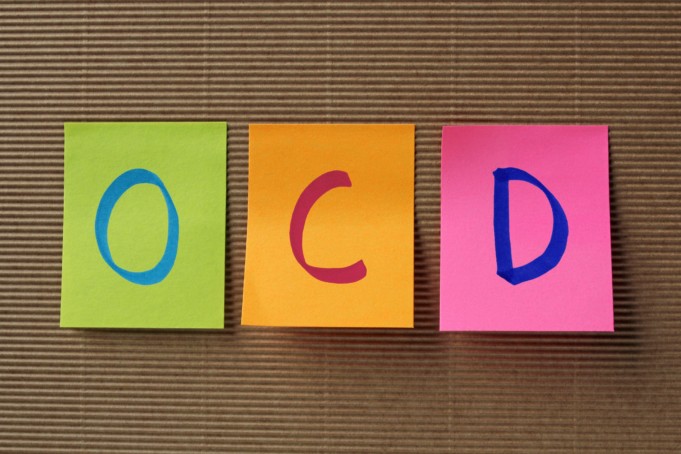The obsessive-compulsive disorder is a type of anxiety disorder that is characterized by repetition, uncontrollable, unwanted thoughts (obsession) and the urge to do something repeatedly (compulsion).
These obsessions and compulsion interfere and disrupt the patient’s social and professional life. Adults who suffer from Obsessive-Compulsive Disorder are able to identify that their obsession is unreasonable, but they are unable to control it.
Trial to stop it causes its sufferers, anxiety and distress; hence they are compelled to engage in the obsessive-compulsive behaviour to ease their distress which in turn, reinforces the behaviour.
This is generally known as the vicious cycle of OCD.
Obsession
Common obsessions include;
- Reoccurring intrusive thoughts without the ability to control it
- Preoccupation with a particular thought or image
Common compulsions include:
- Constant washing or cleaning
- Constant praying or repeating of phrases to prevent harm
- Repetition of routine activities like rereading
- Constantly checking body parts to check nothing has gone wrong
Symptoms
Most cases of OCD fall into at least one of the below-mentioned categories.
- Contamination: This is characterized by the fear of dirt, poor hygiene or being contaminated with germs or chemical. People who fall under this category have the compulsion to clean and wash. Most sufferers, due to their fear of germs, wash their hands until their skin begins to peel off. Some feel dirty after being mistreated and feel the need to bathe themselves in order to wash away the “dirty” feeling.
- Checking: This includes having the constant need to check appliances in the house, locks, ovens, stoves or always thinking one has a medical condition like pregnancy or tumour. People who fall under this category, leave an appliance like a curling iron plugged in on purpose so they can justify their repetitive behaviour.
- Symmetry and order: This is the obsessive need to have things aligned in a certain orderly way or the need to follow a specific strict routine—anything outside their routine causes distress and anxiety.
- Rumination and intrusive thoughts: This includes having an obsessive pattern of thought. Thoughts often include danger and worries of oneself and others. They often engage in repetitive prayers and thoughts.
A sufferer can continue to muster and whisper prayers, thinking that an impending danger will occur if they stop. Some thoughts also include suspicion of people around them or constant awareness of body sensations like breathing.
Causes
There is no exact known cause of Obsessive-Compulsory Disorder (OCD). Although genetic and environmental factors are said to contribute. It is reported severally among sufferers that their condition started after a traumatic event.
Other causes include anxiety, depression and physical difference (an abnormality or imbalance in the neurotransmitters) in certain parts of one’s brain.
Diagnosis
It is difficult to make a diagnosis of Obsessive-Compulsory Disorder. This is because it shares similar symptoms with schizophrenia, Obsessive-compulsive personality disorder, anxiety disorder, depression and some other mental health disorder.
Therefore it is essential to work very closely with your doctor or therapist.
According to the American psychological association, before one is said to have OCD, the symptoms they are experiencing has to meet the following criteria: Obsession or compulsion or both are present.
There is clinically significant distress, anxiety and damage in the social, professional or other important areas of life. The symptoms being experienced are not accounted to the effects of medication or drug abuse.
Another mental disorder does not better explain the symptoms.
Treatment
There is no cure for OCD, but the symptoms can be managed so as not to disrupt or affect the sufferer’s typical day to day activities. Some patient may need long-term or intensive treatment, depending on how severe the case may be.
Treatments may include the following:
- Relaxation: Relaxation, meditation, massage are reportedly helpful in relieving OCD symptoms.
- Psychotherapy: This is based on changing thought patterns. This helps identify unhelpful thought and help devise ways to control or manage them. Therapy may come in the form of exposure therapy which involves exposing sufferer to the situation that causes distress, anxiety and sets off compulsion. The sufferer will learn to manage and control the OCD thoughts. Response prevention helps the patients learn to resist the compulsion to engage in the behaviour.
- Medication: This is purely for informational purposes. It is not advisable to take medication without a doctor’s supervision. Selective serotonin reuptake inhibitors help OCD patients manage and control their obsessions and compulsion. However, it takes 2-4 months for the medications to start working. Other drugs include Fluoxetine, Fluvoxamine, escitalopram.
- Neuromodulation: When medications and therapy aren’t improving the symptoms, this is introduced to help improve the condition. Neuromodulation aims at stimulating nerve cells using a magnetic field which in turn makes a visible positive difference in the patience.
Symptoms generally start out mildly and tend to vary in severity (mild, moderate and severe) throughout life. It is advised to get medical attention as soon as possible to prevent it from worsening.












